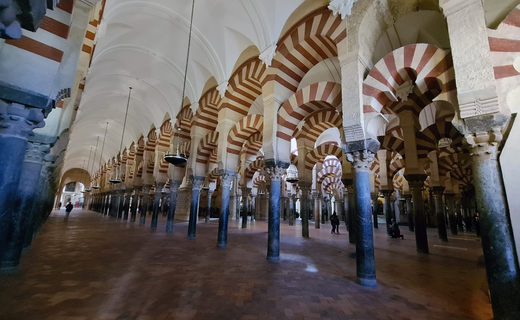Pottery and geometry have long been central to Islamic art, transcending their functional roles to embody a profound spiritual and philosophical significance. Through harmonious designs, artisans have sought to express concepts of infinity, unity, and the divine order of the universe. This quest for the infinite finds its most striking manifestation in the mesmerizing beauty of Islamic tiles and ceramics.
The Role of Geometry in Islamic Art
Islamic art is renowned for its intricate geometric patterns, which are much more than mere decorations. They represent an artistic exploration of the infinite, reflecting the divine nature of creation and the interconnectedness of all things. Geometric designs are a visual language of balance and precision, often constructed using only a compass and straightedge.
The basic shapes—circles, triangles, and squares—serve as the building blocks for complex tessellations that seem to stretch beyond the confines of the material world. Circles, for instance, symbolize the eternal and the divine, the one that has neither a start not an end, while the symmetry and repetition in patterns represent the unchanging laws of the universe.
Pottery as a Canvas of Mysticism
Pottery provides an ideal medium for expressing these geometric ideals. Islamic potters, particularly those in regions like Morocco, Persia, and Andalusia, have historically incorporated geometric patterns into their works, often glazing tiles with vibrant colors to create intricate mosaics. These ceramics adorned mosques, madrasas, and palaces, transforming spaces into sanctuaries of contemplation and beauty.
The reflective surfaces of glazed ceramics and the infinite repetition of patterns invite the observer to ponder the divine’s infinite nature. This interplay of form and function elevates pottery from a utilitarian craft to a spiritual practice, mirroring the artisan's journey to attain harmony with the divine.
The Mystical Connection: The Whirling Dervishes and the Dance of Geometry

In the Sufi tradition, mysticism is expressed through poetry, music, and the dance of the Whirling Dervishes. These dervishes, followers of the Mevlevi order, engage in a meditative dance known as the "Sema," a symbolic act of spiritual ascent and unity with God, so-called Fana'a. The swirling motion of the dervishes echoes the geometric perfection of Islamic art. Each rotation, like the infinite repetition of a geometric pattern, represents a journey towards divine unity.
This dance of geometry is not limited to human motion but is also evident in the arrangement of tiles and ceramics. The spiraling motifs found in many Islamic designs mimic the dervishes' whirling movements, creating a visual rhythm that resonates with the spiritual rhythm of the Sema.
Tiles: The Quest for Infinity
Islamic tiles are perhaps the most enduring symbols of the quest for infinity. Zellige, the traditional Moroccan mosaic tilework, exemplifies this artistry. Crafted from hand-cut, glazed tiles, zellige patterns are meticulously arranged to form kaleidoscopic designs. These patterns often avoid representational imagery, adhering to Islamic principles that emphasize abstraction and divine transcendence.
Each zellige tile, though finite in its physical form, contributes to a pattern that suggests boundlessness. The act of crafting such tiles is itself a spiritual exercise, requiring patience, precision, and a deep connection to the materials and the divine inspiration they represent.
Pottery and the Modern Quest for Meaning
In a world increasingly disconnected from the natural and the spiritual, the art of pottery and geometry offers a return to mindfulness and contemplation. The process of using hands for shaping clay, carving patterns, and applying glazes becomes a meditation on creation and the eternal. Each handcrafted piece is a reminder of humanity’s role as both creator and created, a reflection of the divine order expressed through geometry.
The Legacy of Islamic Geometry in Moroccan Ceramics
Morocco’s rich ceramic tradition carries the legacy of this interplay between geometry, mysticism, and craftsmanship. From the iconic blue-and-white Fes pottery to the vibrant zellige tiles of Marrakech, Moroccan ceramics continue to celebrate the harmony of form, function, and spiritual significance.
At Lamsa, we honor this tradition by creating handcrafted ceramics that reflect the timeless beauty of Islamic art. Each piece in our collection is a tribute to the artisans who, for centuries, have explored the infinite through geometry and clay. Whether it’s a delicately patterned vase or a zellige-inspired dish, our pottery invites you to connect with the profound legacy of Islamic artistry.
Explore our collection and bring the timeless elegance of Moroccan ceramics into your home. Let the patterns inspire your own reflections on infinity and unity, one handcrafted piece at a time.

